|
Here are two rocks (bluish gray, layered brown) that just don't seem to belong next to each other. Perhaps the gray rock is some sort of intrusive rock or perhaps there is a near vertical fault separating the left rocks from those on the right. A closer look plus a good walk around the mountain would be required to tell.
Mosaic Canyon, Death Valley, CA
|
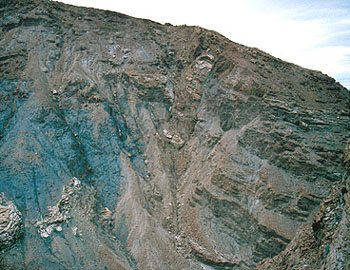
|
|
Linear features are always suspicious. In this case, the long set of shadows in a line at the base of the alluvial fans indicates a fault scarp. The mountains moved up a bit, the valley dropped a bit, and a small cliff was created in the gravel sediments at the base of the mountains. Since erosion rapidly destroys a cliff in loose sediments, this earthquake took place not so long ago.
Near Badwater, Death Valley, CA
|
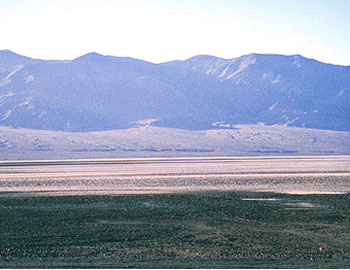
|
|
In 1872 Owens Valley California suffered one of the largest earthquakes to strike the state. This is another fault scarp in the boulders and gravels that came off the Sierra Nevadas.
Up close, it can be hard to recognize a fault scarp. It is much easier to see from a distance (as above).
|
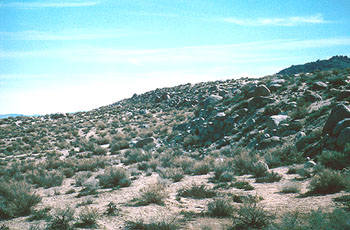
|
|
This is a huge fault scarp that has formed tall cliffs in solid rock.
Photo: Norris W. Jones
|
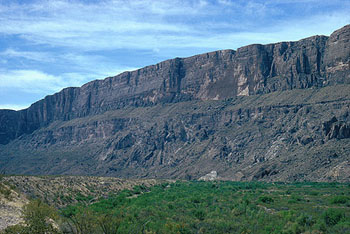
|
|
In this part of Death Valley, the major normal fault along the near side of the valley is causing the valley floor to sink and tilt toward the viewer. This causes the lake sediments (white salts) to come right up to the base of the mountains.
|
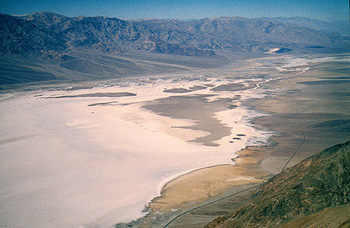
On the far side, thick fans of debris have accumulated at the surface. Along the near side, these fans don't build up very far before fault motion sinks the valley floor a bit more and the fan sediments get buried by salts.
|
|
These mountains have almost no fans of gravel accumulating at their feet. Thus, there must be a normal fault causing the valley to tilt toward the mountains. The alluvial fans cannot grow far before the are carried down below the surface of the valley sediments.
The triangular terminations of the mountain ridges suggest they have been cut by a fault.
Deep Springs, CA
|
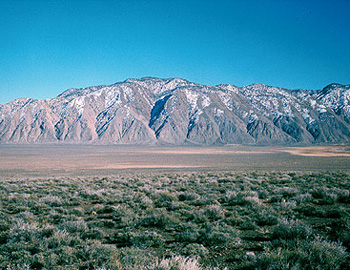
|
|
This is Badwater, Death Valley, CA. This is the lowest place on land in North America because the valley floor is on a fault block tilting down toward a normal fault. The actual fault is shown here as the smooth greenish ridge going up to the right.
|
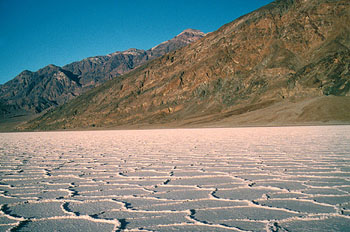
|

![]()






